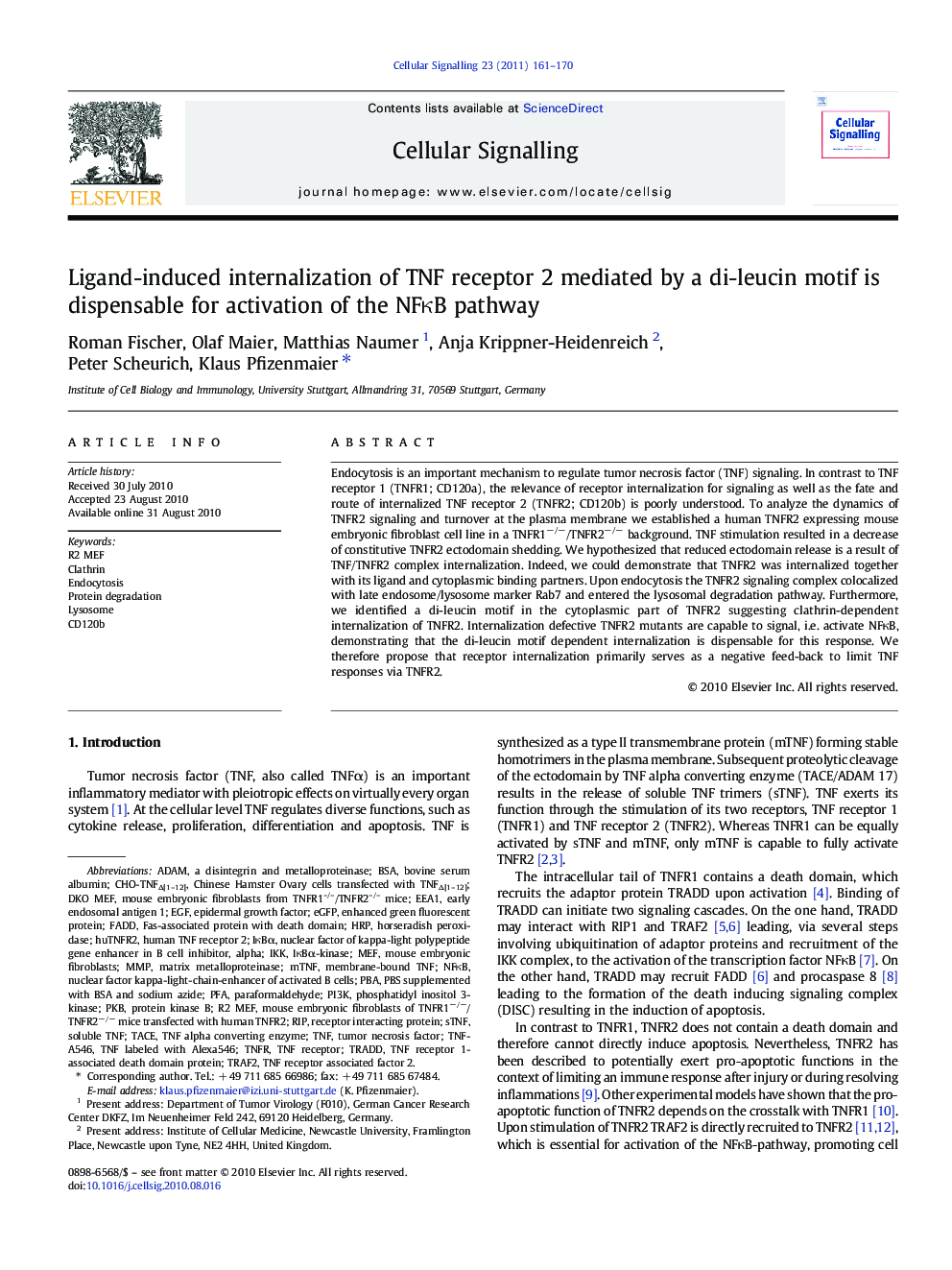| Article ID | Journal | Published Year | Pages | File Type |
|---|---|---|---|---|
| 1963829 | Cellular Signalling | 2011 | 10 Pages |
Abstract
Endocytosis is an important mechanism to regulate tumor necrosis factor (TNF) signaling. In contrast to TNF receptor 1 (TNFR1; CD120a), the relevance of receptor internalization for signaling as well as the fate and route of internalized TNF receptor 2 (TNFR2; CD120b) is poorly understood. To analyze the dynamics of TNFR2 signaling and turnover at the plasma membrane we established a human TNFR2 expressing mouse embryonic fibroblast cell line in a TNFR1â/â/TNFR2â/â background. TNF stimulation resulted in a decrease of constitutive TNFR2 ectodomain shedding. We hypothesized that reduced ectodomain release is a result of TNF/TNFR2 complex internalization. Indeed, we could demonstrate that TNFR2 was internalized together with its ligand and cytoplasmic binding partners. Upon endocytosis the TNFR2 signaling complex colocalized with late endosome/lysosome marker Rab7 and entered the lysosomal degradation pathway. Furthermore, we identified a di-leucin motif in the cytoplasmic part of TNFR2 suggesting clathrin-dependent internalization of TNFR2. Internalization defective TNFR2 mutants are capable to signal, i.e. activate NFκB, demonstrating that the di-leucin motif dependent internalization is dispensable for this response. We therefore propose that receptor internalization primarily serves as a negative feed-back to limit TNF responses via TNFR2.
Keywords
PBAPFAIKKFADDEEA1PKBIκBαTRAF2TACEPI3KTNFRSoluble TNFsTNFTRADDmTNFTNFTNF receptor associated factor 2MMPMEFeGFPHRPEGFBSANFκBADAMbovine serum albuminearly endosomal antigen 1Endocytosisa disintegrin and metalloproteinaseProtein degradationepidermal growth factortumor necrosis factornuclear factor kappa-light-chain-enhancer of activated B cellsPhosphatidyl Inositol 3-kinaseLysosomematrix metalloproteinasemouse embryonic fibroblastsparaformaldehydeRIPHorseradish peroxidaseenhanced green fluorescent proteinFas-associated protein with death domainprotein kinase BReceptor interacting proteinClathrinTNF receptor
Related Topics
Life Sciences
Biochemistry, Genetics and Molecular Biology
Biochemistry
Authors
Roman Fischer, Olaf Maier, Matthias Naumer, Anja Krippner-Heidenreich, Peter Scheurich, Klaus Pfizenmaier,
